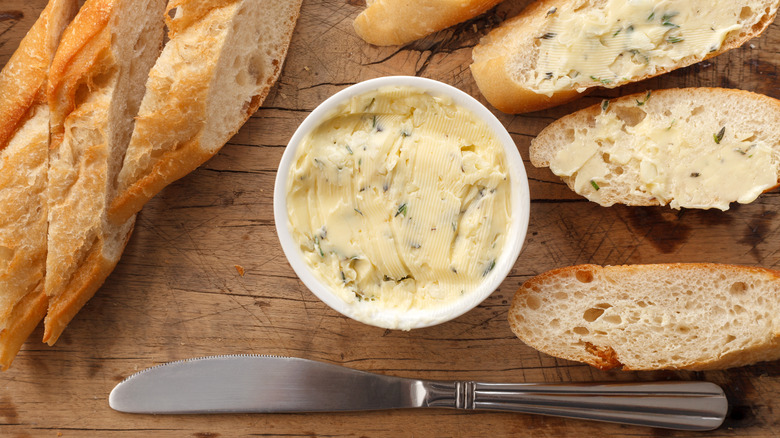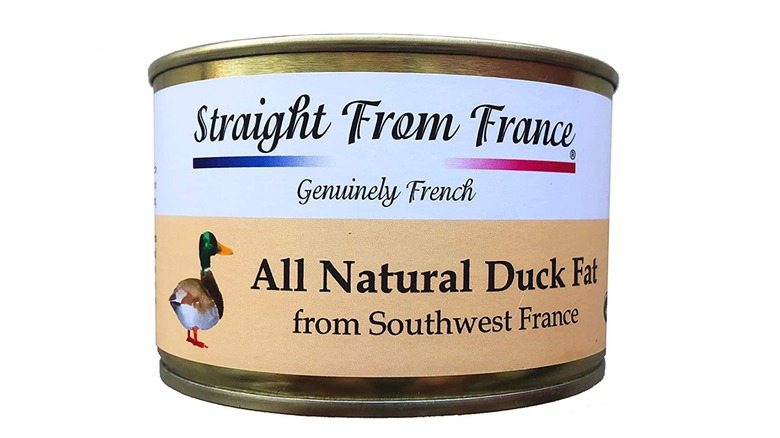Duck Fat Is The Luxurious Ingredient Your Compound Butter Is Missing
We may receive a commission on purchases made from links.
Compound butter, as per its name, is an ingredient primarily composed of butter that's been enhanced by certain flavoring agents. One kind we're well acquainted with is garlic butter, which is often spread over toasted bread as a classic accompaniment to a spaghetti dinner. On the slightly fancier side is beurre maître d'hôtel (or, as The Pioneer Woman calls it, cowboy butter), which is flavored with lemon juice and parsley. Compound butter can also be sweet as well as savory. Bobby Flay favors molasses as a flavoring while Texas Roadhouse goes for a combination of cinnamon and honey.
One Lifehacker contributor, however, eschews herbs, spices, juices, and sweeteners in favor of combining their butter with a different kind of fat. Does this still count as compound butter, then, or is it an entirely different product? Let's not waste time arguing about definitions, but instead discuss just why (and how) you might want to add duck fat to your butter (or vice-versa).
Butter will allow your duck fat to go farther
Duck fat is highly prized for its flavor. Duck-fat french fries are amazing, as is duck confit. One problem with this ingredient, though, is that it's pretty pricey. As of this writing, 11 or 12 ounces of the stuff can cost between $14 and $19 on Amazon, for example. Even if you get it from roasting a duck, you'll probably pay a premium price for that duck, and the one that comes out of the oven will be considerably smaller than the one that goes in. (With duck, fat loss from cooking = significant shrinkage.) Mixing it with butter, however, will help stretch out that precious duck fat.
According to the Lifehacker poster, making "duck frosting" isn't quite as simple as stirring duck fat into softened butter. Instead, the site says you must first render the duck fat (unless you've purchased the pre-rendered kind), then ensure that both butter and duck fat are at room temperature. Lifehacker also insists you use a stand mixer with a whisk attachment to combine the ingredients. (If you're using unsalted butter, you'll need to stir in salt.) Once the butter and duck fat are well-combined, you can use the mixture as a spread or topping in the same way you'd use either butter or duck fat. Due to the different properties of both fats, though, you'll need to be careful about substituting it for either ingredient in baking or frying.

